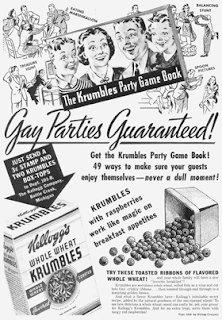 |
| Did you know a half litre of chocolate milk has 12 1/2 tsp. sugar? |
Recently the Ontario Medical Association (OMA) held a press conference at which the province's doctors came out in favour of increasing taxes on junk food, while at the same time decreasing taxes on healthy alternatives. The OMA went so far as to suggest placing graphic warning labels on pop and other high calorie foods having little or no nutritional value.
The graphic images presented were pretty horrible. I am sure the OMA hoped to grab media attention by juxtaposing an image of an ulcerated foot with that of a juice box. If that was their intent, they were successful. (Read
Ian Gillespie's opinion piece in The London Free Press.)
Taxing high calorie food is already being done in Denmark, Hungary and France. Peru, Ireland and the UK are considering such taxes. Maybe it is high time for Ontario to consider following suit. Research indicates the tax must be 20 percent or higher in order to cut consumption. The levy should be accompanied by subsidies on healthy foods. Research indicates those with low incomes benefit the most from these measures.
 |
| One juice box may contain 36 grams of sugar. |
According to the OMA obesity in children is at epidemic levels. 26 percent of
Canadian children between two and 17 years of age are considered
overweight, 8 percent to the point of obesity. These numbers are almost double what they were a little more than three decades ago.
The trend is staggering. Statistics indicate 75% of obese children will become obese adults. We may be raising the first generation of
children to not outlive their parents.
All this is very important to me; I have two lovely granddaughters. I look at the stuff that can sneak into their diets, stuff that wasn't around when I was a boy, and I worry. We are learning how to manufacture some pretty awful stuff and call it food. And reporters, like
Luisa D'Amato of The Record, are quick to jump to the defence of this true junk food.
"A carton of grape juice is not the same as a carton of cigarettes. Not even close," she writes.
I think most of us would agree with her, and most of us might be wrong. Take Welch's Healthy Start Grape Juice. A 200 ml juice box contains more than 31 grams of sugar. Now you know why the OMA warns against excess consumption of grape juice, even 100 percent grape juice with no added sugar must be consumed in limited amounts.
And we aren't even looking at grape drinks (grape drink as opposed to grape juice). The added sugar can push grape drinks into the bad nutrition stratosphere.
D'Amato suggests we resist overeating despite the temptation posed by our cheap,
abundant food. D'Amato misses the point. Way too much of our oh-so-abundant food is incredibly calorie rich and a lot of what is being offered our children is nutrient deficient junk food. With foods high in fats and sugars, we do not have to overeat to pack on the pounds, clog the arteries and overwhelm our bodies.
When I was a boy I ate Kellogg's Krumbles for breakfast as kids had done since 1912. Krumbles were a toasted whole wheat cereal lacking the sugar coating de rigeur today. Krumbles disappeared from store shelves decades ago. Some of today's cereals, like Kellogg's Honey Smacks and Post Golden Crisp, are more than 50 percent sugar (by weight) according to an article that
Consumer Reports ran in 2008.
The same CR article states that such sugary cereals are
heavily marketed to children, to the tune of about $229 million advertising dollars per year. With that kind of money driving sales, maybe the doctors are onto something when they suggest using the tax code to apply the brakes to sales.
Many of our processed foods add solid fats along with added sugar. Together, solid fats and added sugar are known as SoFAS.
To cut back on SoFAS the Mayo Clinic advises limiting table sugar, desserts, pizza, sausage and
similar fatty meats, sweetened beverages, stick margarine and butter,
and candy.
A tax applied in a reasonable manner would not price food out of reach of the poor but encourage companies to beat the tax by offering nutritionally rich food products at prices reflecting the tax-free status. My wife's homemade pizza goes heavy on the artichokes, tomato slices, broccoli and colourful sweet peppers and it is light on bacon, sausage and cheese. No warning is needed on my wife's Mediterranean diet pizza - a pizza inspired by our visit to southern France and Italy.
There is no hotdog stuffed crust to be found sullying real Italian, oh-so-healthy, pizza.













.jpg)